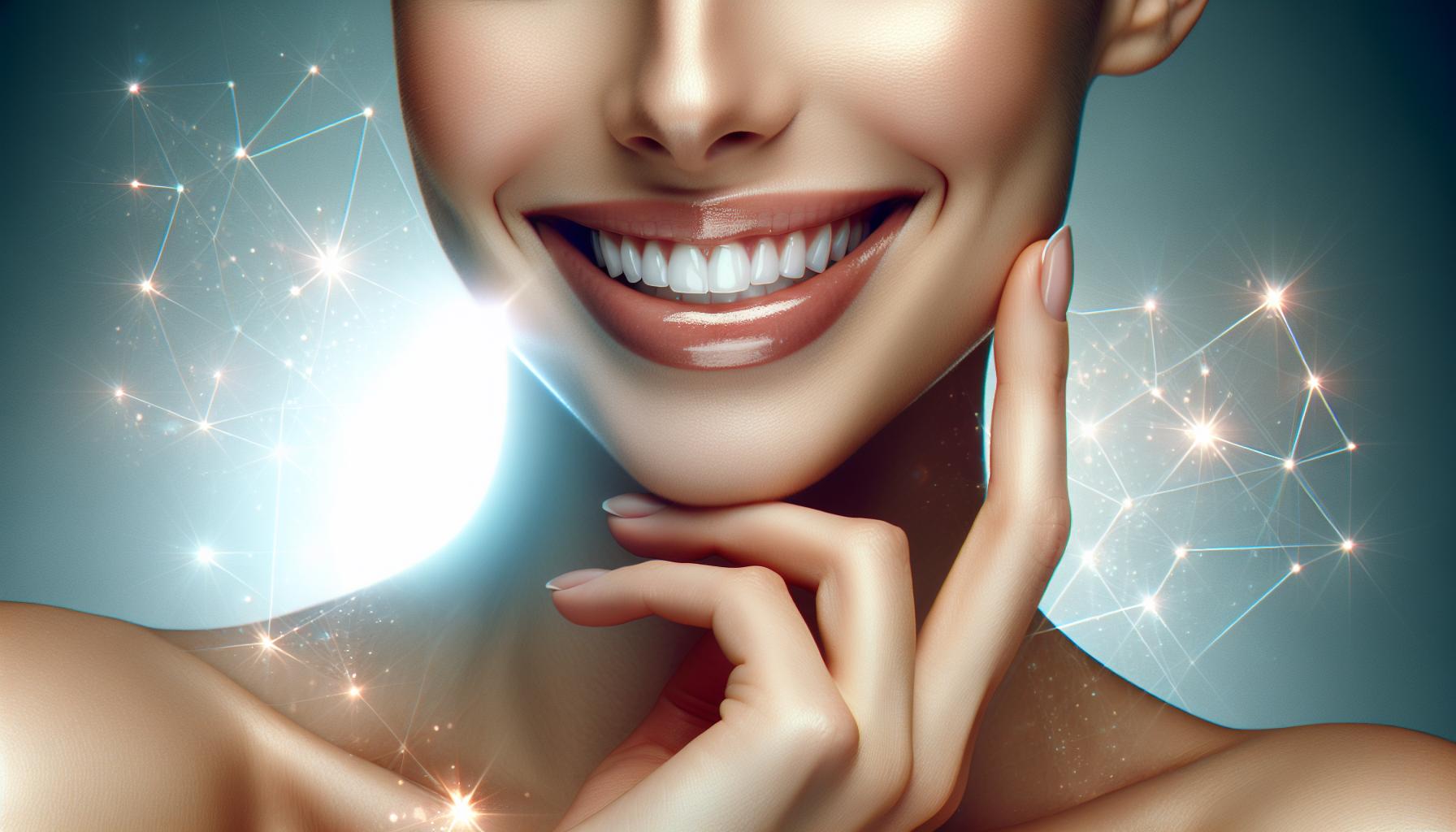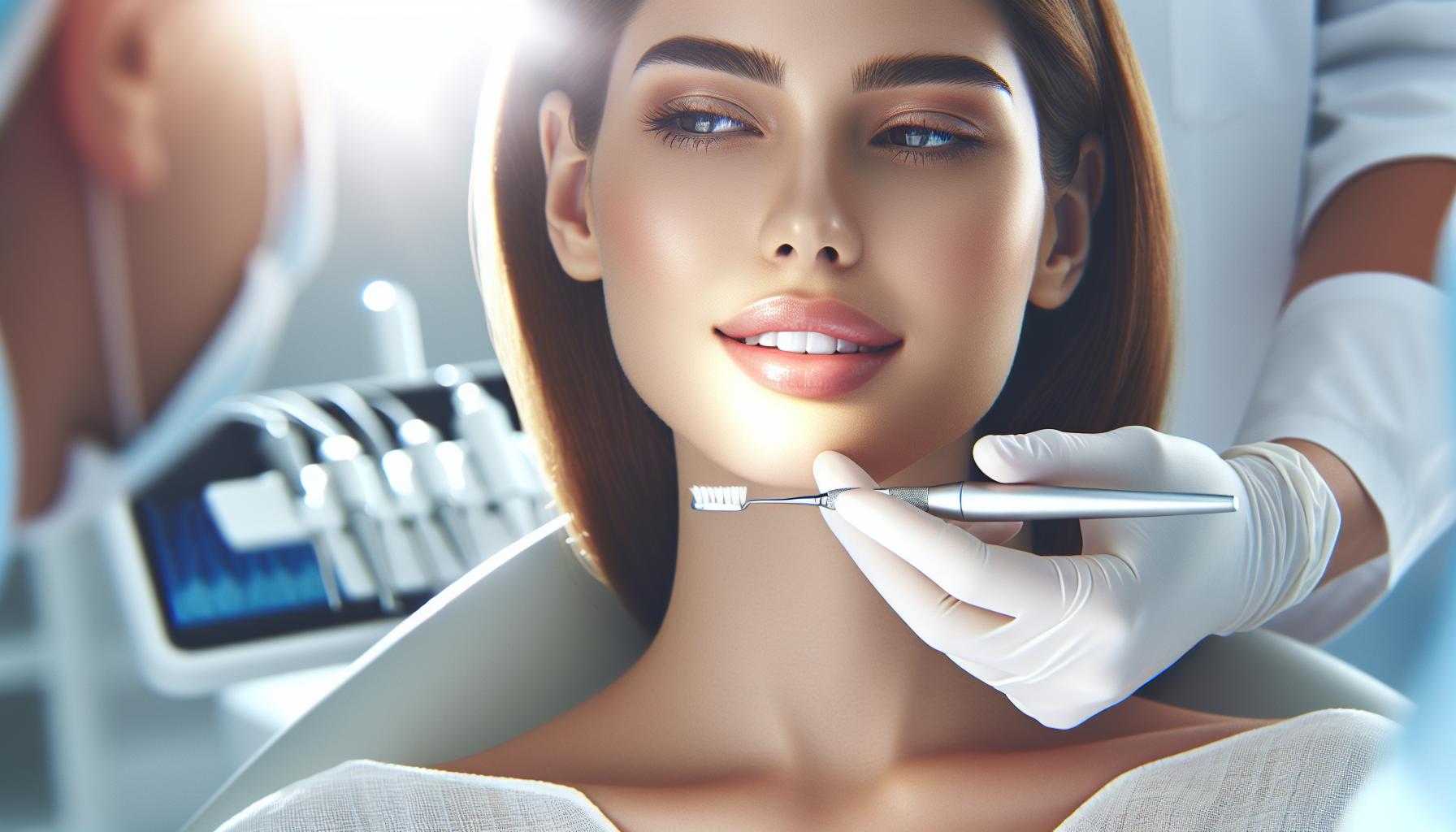Are you struggling with discolored teeth that detract from your smile? Maintaining a luminous and confident grin is crucial not just for aesthetics but also for self-esteem. In this guide, we’ll explore five proven methods to prevent yellowing, ensuring your pearly whites remain vibrant and healthy. Discover effective strategies to keep your teeth shining bright!
Understanding the Causes of Tooth Discoloration
Tooth discoloration is an aesthetic concern many individuals face as they age or as a result of lifestyle choices.Understanding the various causes behind this change in color is crucial, not only for finding effective solutions but also for preventing further staining. Your teeth may start to appear yellow for several reasons, many of which can be managed with simple adjustments.
Intrinsic vs.Extrinsic Staining
The discoloration of teeth can generally be divided into two categories: intrinsic and extrinsic staining.
- Intrinsic Staining: This occurs within the tooth structure itself and can be caused by factors such as aging, trauma to the teeth, or certain medications like tetracycline. Intrinsic stains tend to be more difficult to treat and often require professional whitening procedures.
- Extrinsic Staining: These stains form on the surface of the teeth due to external factors,including consumption of certain foods and beverages (like coffee,tea,and red wine),tobacco use,and poor oral hygiene. Fortunately, these stains are often treatable with over-the-counter whitening products or at-home remedies.
Diet and Lifestyle Impact
Your daily habits substantially impact the health and appearance of your teeth. A diet high in acidic or pigmented foods can lead to enamel erosion, exposing the underlying dentin, which is naturally yellowish. To combat this, consider moderating your intake of:
| Food/Beverage | Potential Effects |
|---|---|
| Coffee | Stains due to high tannin content. |
| Tea | Similar staining effects as coffee, along with reduced enamel strength. |
| Red Wine | Rich in chromogens, which can deeply stain teeth. |
| Berries | Natural pigments can lead to surface stains. |
Avoiding these foods or at least rinsing your mouth with water after consumption can help minimize staining. Additionally, maintaining a consistent oral hygiene routine—brushing twice a day and flossing daily—plays a crucial role in preventing discoloration.
Health Factors
certain health-related factors can also contribute significantly to tooth discoloration. Conditions like acid reflux introduce stomach acids to the mouth, eroding enamel and leading to increased stain visibility. Moreover, medications prescribed for various conditions—notably antibiotics—can lead to discoloration. If you’re concerned about discoloration linked to health issues or medications, consult with a dental professional for tailored advice.
By understanding these underlying causes of tooth discoloration,you’ll be better equipped to implement effective methods to stop your teeth from becoming yellow. whether through dietary changes, improved oral hygiene, or professional treatments, addressing the sources of staining can preserve your smile’s brightness.
Daily Habits that Keep your Smile Bright
Daily Habits to Maintain a Radiant Smile
A dazzling smile isn’t just about occasional treatments; it’s firmly rooted in daily habits that prevent your teeth from becoming yellow. By adopting a consistent oral hygiene routine and making a few lifestyle changes, you can complement the whitening methods discussed previously. Here’s a closer look at some essential habits that contribute to a brighter smile.
- Brushing Twice a Day: Using a fluoride toothpaste is crucial. Make sure to brush your teeth at least twice daily for two minutes each time. This not only removes surface stains but also helps combat plaque buildup that can lead to discoloration.
- Regular Flossing: Flossing daily removes debris and food particles stuck between teeth, which can contribute to yellowing. Neglecting these areas can lead to more serious dental issues, including gum disease.
- Mouthwash Use: Incorporating an antibacterial mouthwash can further reduce plaque and help keep your mouth fresh. look for products that contain fluoride for added protection against tooth decay.
- Dietary Choices: Be mindful of what you consume. Foods high in sugar and certain drinks like coffee and red wine can stain your teeth over time. Instead, munch on crunchy vegetables like carrots and apples, which can naturally scrub your teeth as you eat.
Enhancing Your Routine
Along with the usual dental care routines, consider the impact of lifestyle choices on your smile’s brightness. Here are a few effective strategies:
- Stay Hydrated: Drinking water frequently assists in washing away food particles and bacteria that can cause stains. It also helps maintain saliva production, which is essential for oral health.
- Limit Staining Habits: Smoking or using tobacco is one of the leading causes of yellow teeth. Quitting smoking not only improves your smile but also benefits your overall health.
- Regular Dental Check-Ups: Visiting your dentist at least twice a year allows for professional cleanings that significantly reduce discoloration. Your dentist can offer personalized advice and recommend specific whitening treatments if needed.
By implementing these daily habits, you can effectively maintain a brighter smile and reduce the risk of your teeth becoming yellow. Consistency is key,and the combination of good oral hygiene practices and mindful eating will make a significant difference in achieving the results you desire.
Top Foods and Drinks to Limit for whiter Teeth
While many foods can naturally help in maintaining white teeth, certain items can significantly contribute to staining and may hinder your whitening efforts. It’s essential to be aware of these foods and drinks as you implement the tips from How to Stop Your Teeth From Becoming Yellow: 5 Proven Whitening Methods. By limiting or avoiding these items, you can protect your smile from unwanted discoloration and achieve a brighter, healthier look.
Foods and Drinks to Avoid or Limit
To maintain whiter teeth, consider reducing your intake of the following:
- Dark Berries: Blueberries, blackberries, and other dark fruits can leave stubborn stains on your teeth due to their rich pigmentation.
- Red wine: The tannins and chromogens in red wine can cause significant staining over time, even after just a few glasses.
- Coffee and Tea: Both beverages are known for staining abilities,especially when consumed without milk. the acids in coffee and tea can also wear down enamel, making teeth more prone to discoloration.
- Cola and Dark Sodas: High in acids and coloring agents, these drinks can darken teeth and contribute to enamel erosion.
- Sauces: Items like soy sauce, tomato sauce, and balsamic vinegar can stain teeth due to their dark colors and acidity.
Limiting these foods and drinks is a proactive step you can take in your journey for whiter teeth. However, if you indulge occasionally, be sure to rinse your mouth with water afterwards to minimize their staining effects.
Practices for Maintaining a Bright Smile
Along with dietary changes, here are some practical tips to consider that align with the lessons from How to Stop Your Teeth from Becoming yellow: 5 Proven Whitening Methods:
- Drink Water Regularly: Water helps wash away food particles and reduces the acidity in your mouth, which can lead to staining.
- Brush After Meals: If possible, brush your teeth after consuming stain-producing foods or drinks to prevent discoloration.
- Chew Sugar-Free Gum: This can stimulate saliva production, which naturally cleanses the mouth and can neutralize acids.
By being mindful of your diet and maintaining good oral hygiene practices, you can effectively combat tooth discoloration and enhance your smile. Making these adjustments may not only contribute to a whiter appearance but also promote overall dental health.
Effective Over-the-Counter Whitening Products: What to Look For
Choosing Effective Over-the-Counter Whitening Products
When it comes to enhancing your smile,understanding the ingredients in over-the-counter whitening products is crucial. Many of these products contain active whitening agents like hydrogen peroxide and carbamide peroxide, which are scientifically proven to effectively lighten tooth discoloration. Not only are these ingredients recommended by dentists, but they also have a solid track record for safely whitening teeth at home. Products may include strips, gels, and trays, each delivering varying levels of peroxide depending on their intended use and concentration.
- Hydrogen Peroxide: this is the most common active ingredient found in teeth whitening products. It works quickly to break down stains on the enamel and is effective in lower concentrations for periodic use.
- Carbamide Peroxide: A derivative of hydrogen peroxide that releases the chemical more slowly, providing sustained whitening effects over time and often resulting in less sensitivity.
- Whitening Strips: these convenient options offer a simple application process.They typically contain a thin layer of hydrogen peroxide gel and are capable of delivering noticeable results within a week or two.
- Whitening Trays: These are custom-fit or semi-custom options that can provide more even contact with the teeth, often leading to more consistent results.
While effectiveness is essential, safety should also remain a top priority. According to the American Dental Association, mild and transient side effects, such as tooth sensitivity and oral irritation, can occur, particularly with higher concentrations. However, these effects typically resolve shortly after stopping the treatment, making at-home whitening a viable option for many individuals [2[2].
What to Avoid in Whitening Products
As you explore your options, be mindful of certain ingredients and claims that may indicate a less-than-reputable product. look for:
- Products without ADA Seal of Acceptance, which ensures they meet safety and efficacy standards.
- Formulas with potentially harmful additives or abrasive components that can damage enamel.
- Overly aggressive claims promising instant results,which may not be feasible for safe use.
Effective over-the-counter whitening products can be a valuable part of your oral care routine, aligning perfectly with the tips outlined in the article on how to stop your teeth from becoming yellow. By prioritizing ingredients like hydrogen and carbamide peroxide and avoiding aggressive or unsafe formulations, you can achieve a brighter smile responsibly and effectively.
Professional Whitening Treatments: Are They Worth It?
Are Professional Whitening Treatments Worth It?
For those grappling with teeth discoloration,the allure of a brilliant smile is often overshadowed by the myriad of whitening options available. Professional whitening treatments stand out due to their effectiveness and speed. Unlike over-the-counter products, which may take weeks to yield noticeable results, in-office treatments can brighten your teeth in as little as an hour.This rapid transformation can be particularly appealing for individuals with upcoming events or who simply want a speedy boost in confidence.
When considering professional whitening, it’s essential to understand the different methods available. Most dentists offer two primary options: in-office treatments and take-home kits. In-office whitening utilizes powerful bleaching agents and advanced light technology, ensuring optimal results under the supervision of a dental professional. On the other hand, custom take-home trays provide a more convenient solution that allows you to maintain your desired brightness at your own pace. While both methods have their merits, they vary in terms of cost, convenience, and longevity of results.
Here’s a quick comparison of the two methods:
| Method | Cost | Duration | Effectiveness |
|---|---|---|---|
| In-Office Treatment | $300 – $1,800 | 1 Hour | Immediate Results |
| Take-Home Kit | $200 – $600 | Varies (Days to Weeks) | Gradual Results |
Ultimately, whether professional whitening treatments are worth the investment depends on individual needs and circumstances. For those seeking significant results and willing to spend a bit more for the assurance of professional supervision, these treatments are a highly effective choice. Additionally,when paired with diligent oral care and preventive measures outlined in “How to Stop your Teeth from Becoming Yellow: 5 Proven Whitening Methods,” the benefits of professional whitening can be prolonged,resulting in a vibrant smile that lasts.
It’s advisable to consult with a dental professional before starting any whitening regimen. they can provide tailored advice, taking into account your dental health, the cause of discoloration, and the most suitable whitening approach. This personalized insight can make all the difference in achieving the smile you’ve always dreamed of.
Natural Remedies for a Brighter Smile: Do They Work?
Exploring the Efficacy of Natural Whitening Remedies
For many seeking a brighter smile, natural remedies present an appealing option due to their perceived safety and accessibility. Leveraging common household items can be a cost-effective way to tackle teeth discoloration. But do these methods truly deliver on their promises? While results may vary from person to person, scientific evidence supports several natural approaches to enhance your smile.
One of the most popular natural remedies is baking soda, renowned for its mild abrasive qualities. When used correctly, it can help scrub away surface stains without damaging enamel. Regular application, perhaps a few times a week, can significantly aid in maintaining a whiter appearance. Additionally, mixing baking soda with hydrogen peroxide, which has mild bleaching properties, can increase its effectiveness. However, moderation is critical; overuse may lead to enamel erosion. [[2]].
Another method gaining traction is oil pulling—a practice rooted in ancient Ayurvedic medicine. Swishing coconut or sesame oil in the mouth for 10-20 minutes may help reduce harmful bacteria and improve overall oral health, possibly leading to a whiter smile over time. Although research on its effectiveness in teeth whitening is limited, many proponents swear by its benefits. Furthermore, dietary choices play a pivotal role in maintaining tooth color; avoiding foods and beverages that stain teeth, like coffee or red wine, can prevent further discoloration.
Simple Natural Whitening Methods
Implementing natural teeth whitening techniques can be straightforward and allow for a more holistic dental care routine. Here’s a quick guide on practical methods:
| Method | How it effectively works | Frequency |
|---|---|---|
| Baking Soda | Mildly abrasive, removes surface stains | 1-2 times per week |
| Hydrogen Peroxide | Bleaching properties for deeper stains | Occasionally, mixed with baking soda for a paste |
| Oil Pulling | Helps remove bacteria and surface stains | Daily, for 10-20 minutes |
| Fruits & Vegetables | Crisp foods like apples act as natural abrasives | Incorporate regularly into your diet |
Incorporating these remedies into your dental care routine can provide a more natural approach to achieving a brighter smile. While they’re not substitutes for professional treatments,they can complement your efforts in how to stop your teeth from becoming yellow: 5 proven whitening methods. Always consult your dentist before trying new whitening techniques to ensure they align with your dental health needs.
The Role of Oral Hygiene in Preventing yellow Teeth
Teeth can loose their luster and brightness over time, leading to a yellowed appearance that affects confidence and overall oral health.One of the most effective ways to combat this discoloration is through diligent oral hygiene practices. Excellent oral hygiene is not just about fresh breath; it’s a crucial component in preventing staining and maintaining the natural whiteness of your teeth.
The Importance of Regular Brushing and Flossing
Brushing your teeth at least twice a day with fluoride toothpaste is essential in the fight against yellowing.Brushing helps to remove plaque, a sticky film of bacteria that forms on your teeth. If left unchecked, plaque can harden into tartar, a hard deposit that contributes to yellowing and can only be removed by a dentist. equally significant is flossing daily, which eliminates food particles and plaque from between the teeth and along the gum line, areas that toothbrushes often miss. This comprehensive approach to cleaning your mouth significantly reduces the chances of discoloration, supporting the advice found in various resources on teeth whitening and maintenance [[1](https://www.dramarnathansdentalcare.com/what-makes-teeth-yellow-common-causes-and-how-to-prevent-it/)].
Choosing the Right Products
Using the right dental care products can further enhance your oral hygiene routine. Opt for a soft-bristle toothbrush to avoid damaging your enamel and consider incorporating an antimicrobial mouthwash. These mouthwashes can help kill bacteria that contribute to plaque buildup, although caution is necessary, as some mouthwash formulations can lead to staining if used improperly [[2](https://www.thesun.co.uk/health/34183709/mouthwash-mistakes-risk-yellow-teeth-oral-thrush-cancer/)].To illustrate the effectiveness of these practices, here’s a simple table outlining products and their benefits for preventing yellow teeth:
| Product Type | Benefit |
|---|---|
| Fluoride Toothpaste | Strengthens enamel and helps remove plaque |
| Soft-Bristle Toothbrush | Gentle cleaning to prevent enamel damage |
| Antimicrobial Mouthwash | Kills bacteria, reducing plaque buildup |
Consistent Professional Care
Regular dental check-ups are also vital in maintaining oral hygiene and preventing yellow teeth. Dentists can provide professional cleanings that remove tartar and offer tailored advice on maintaining a brighter smile.They may recommend whitening treatments if necessary, complementing your home care routine. Implementing these practices, as highlighted in sources discussing how to effectively stop your teeth from becoming yellow, can make a remarkable difference in both the appearance of your teeth and your oral health overall [[3](https://wayzatadental.com/how-to-get-rid-of-yellow-teeth/)].
By committing to these oral hygiene practices, you can significantly reduce the risk of yellowing and keep your smile vibrant for years to come.
Maintaining Your Results: Tips for Long-Lasting Whiteness
Effective Strategies for Keeping Your Smile Bright
Maintaining a dazzlingly white smile is just as crucial as achieving it in the first place.After investing time and resources into whitening your teeth, adopting certain habits can definately help prolong those results. The journey to keeping your teeth white doesn’t end after your whitening treatment; it requires continuous effort and attention to oral care.
- Practice Good Oral Hygiene: Regular brushing and flossing are foundational to preventing discoloration. Aim to brush at least twice a day with a whitening toothpaste that carries the American Dental Association (ADA) Seal of Acceptance.
- Limit Stain-Inducing Foods and Beverages: certain items like coffee, tea, red wine, and berries can contribute to staining over time.If you do consume these, consider rinsing your mouth with water afterward to minimize their impact.
- Stay Hydrated: Drinking plenty of water throughout the day not only promotes general health but also helps wash away food particles and neutralize acids that might stain your teeth.
- Regular Dental Visits: Schedule check-ups and cleanings with your dentist every six months. Professional cleanings help remove surface stains and can keep your teeth looking their best.
Whitening Maintenance Products
To keep your dental aesthetics at their peak, consider incorporating maintenance whitening products into your routine. Many users find over-the-counter touch-up kits or whitening strips useful for maintaining brightness between professional treatments.
| Product Type | Usage Frequency | Notes |
|---|---|---|
| Whitening Toothpaste | Daily | Look for ADA-approved options |
| Whitening Strips | 1-2 times per week | Follow package instructions for best results |
| At-Home Kits | As needed | Consult with your dentist for recommendations |
Mindful Eating and Drinking Habits
Beyond oral hygiene, being mindful of what you eat and drink is essential to prevent further yellowing.As an example,if you prefer acidic beverages like soda or fruit juices,consider using a straw to minimize contact with your teeth. Additionally, incorporating crunchy fruits and vegetables into your diet can naturally help scrub away plaque and surface stains.
Incorporating these proactive measures into your daily life not only enhances your commitment to the methods outlined in “How to Stop Your Teeth From Becoming Yellow: 5 Proven Whitening Methods” but ensures your bright, confident smile lasts longer.
FAQ
How to stop your teeth from becoming yellow?
To stop your teeth from becoming yellow, practice good oral hygiene, limit foods that stain, and consider using whitening products. Regular dental check-ups are also essential for maintaining a bright smile.
Brushing twice a day and flossing daily can help remove plaque and prevent discoloration. Additionally, avoiding drinks like coffee and red wine can significantly reduce staining. For more effective results, explore professional whitening treatments as well.
What are the proven whitening methods for yellow teeth?
Some proven whitening methods include using whitening toothpaste, at-home whitening kits, professional treatments, and natural remedies like baking soda. Each method can help brighten your smile.
Whitening toothpaste contains mild abrasives that can scrub away surface stains while professional treatments use stronger agents for deeper whitening. Natural methods,such as baking soda and hydrogen peroxide,can be effective if used correctly.
Why do teeth become yellow over time?
Teeth become yellow due to a combination of factors, including aging, a diet high in staining substances, and poor oral hygiene. Understanding these causes can help you take proactive measures.
As you age, the enamel wears down, exposing the yellow dentin underneath. Foods and drinks like coffee, tea, and citrus can also contribute to enamel erosion and staining.Regular check-ups can help assess your dental health and the need for whitening.
Can I whiten my teeth at home effectively?
Yes, you can whiten your teeth effectively at home using over-the-counter whitening products like strips, gels, and whitening toothpaste. Following instructions closely is key for success.
At-home kits typically contain hydrogen peroxide or carbamide peroxide, which help remove stains. Natural remedies, such as using baking soda, can also be effective. Just ensure that you are cautious and do not overuse these methods to avoid damaging your enamel.
How often should I use whitening products?
The frequency of using whitening products varies by method. For over-the-counter products, follow the manufacturer’s instructions, frequently enough recommending daily use for a specified period.
Professional treatments may be administered every six months to a year, depending on individual needs. It’s important to consult your dentist to tailor a safe and effective whitening plan for your teeth.
Are there natural methods to prevent teeth yellowing?
Yes, natural methods to prevent yellowing include maintaining a balanced diet, using baking soda occasionally, and consuming crunchy fruits and vegetables that can naturally clean your teeth.
foods like apples, carrots, and celery can definitely help scrub your teeth as you eat. Additionally, drinking plenty of water can rinse away food particles and reduce staining, contributing to overall dental health.
Is professional whitening worth it?
Professional whitening is often worth the investment for those seeking significant results in a short time frame.It can provide noticeable changes that over-the-counter products may not achieve.
A dentist uses stronger whitening agents and tailored techniques for a customized approach. This method often leads to faster and longer-lasting results,making it a preferred option for many patients looking for a bright,white smile.
Closing Remarks
maintaining a bright smile is not only achievable but also within your reach with the right methods. By implementing the five proven whitening techniques discussed,you can effectively combat yellowing and embrace a more confident,radiant smile. From staying mindful of dietary choices to exploring professional whitening options, you have the tools to take proactive steps toward dental brightness. Remember, while home remedies are beneficial, don’t hesitate to seek professional advice when needed to ensure optimal results. For more insights on teeth whitening and to explore the best practices tailored to your needs, keep engaging with our resources. Your journey to a whiter smile starts today!








